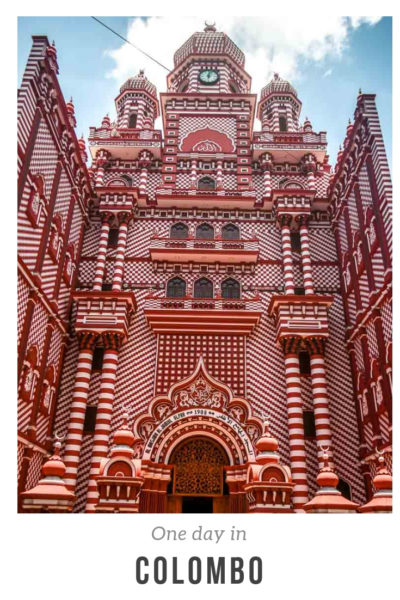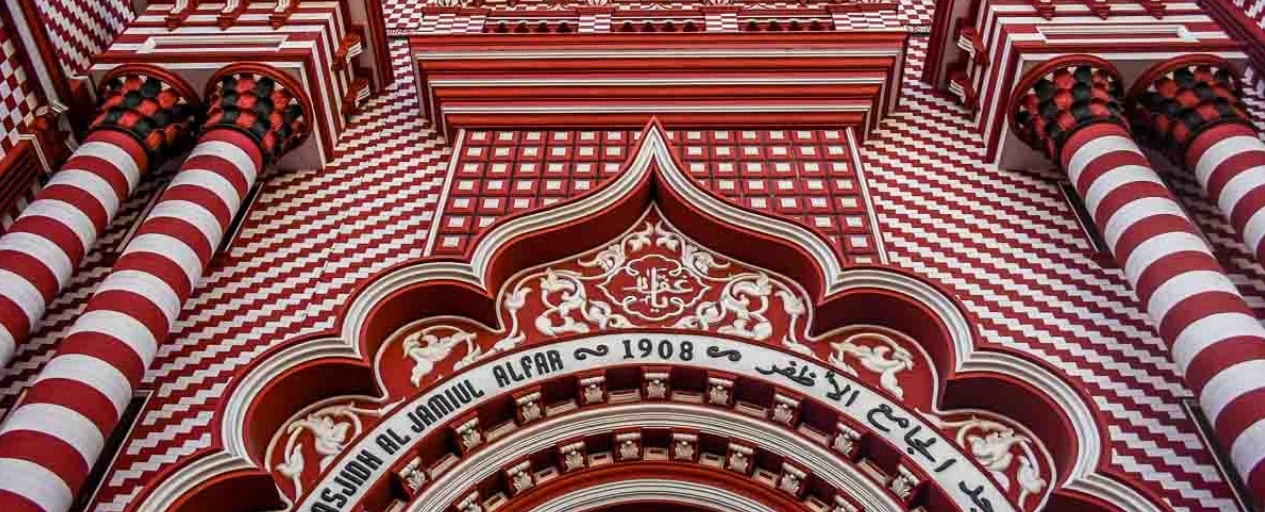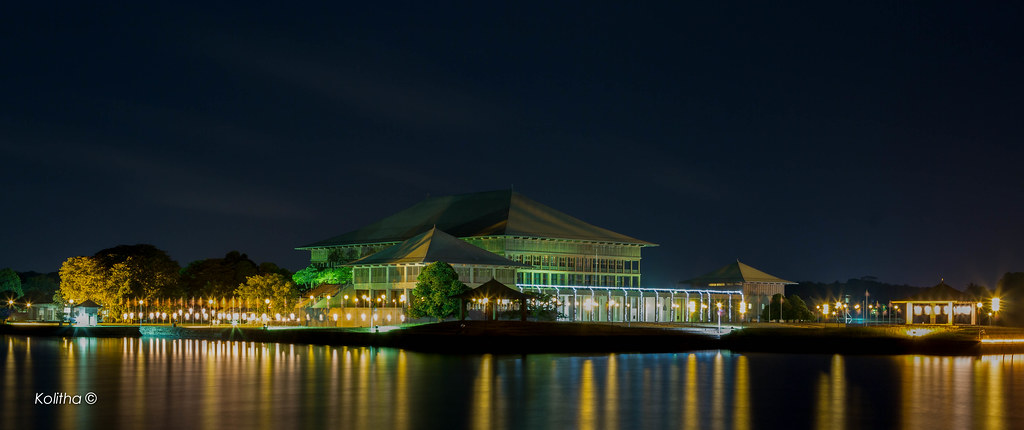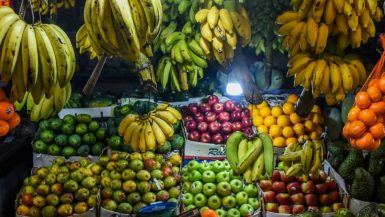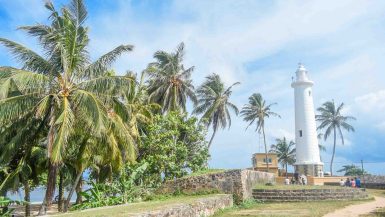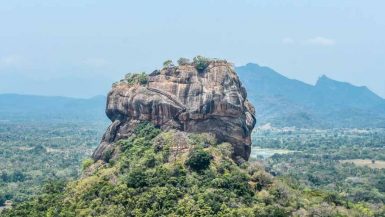As Sri Lanka’s largest city, Colombo is the gateway to the beautiful island nation. With so many great places to visit in Sri Lanka, your first instinct might be to skip over Colombo, but dig a little deeper and you’ll find it definitely worth exploring. I had one day in Colombo and found that to be a really good length of time. With such a rich history and the number of times it has changed control, Sri Lanka has ended up becoming a melting pot of cultures. As I found, you can be visiting an intricate Hindu shrine one minute, an historical government building the next, followed by a Muslim mosque. There’s some incredible diversity in Sri Lanka.
If you’re planning a trip to Sri Lanka, spend your first (or last) day discovering the best things to do Colombo. Stay somewhere central (within spitting distance of Fort and Beira Lake ideally), walk to the spots nearby, and get tuk-tuks everywhere else. My Colombo experience was on my last day in Sri Lanka and this is everything I saw. If you’re not sure what to do in Colombo, I hope this guide is helpful.
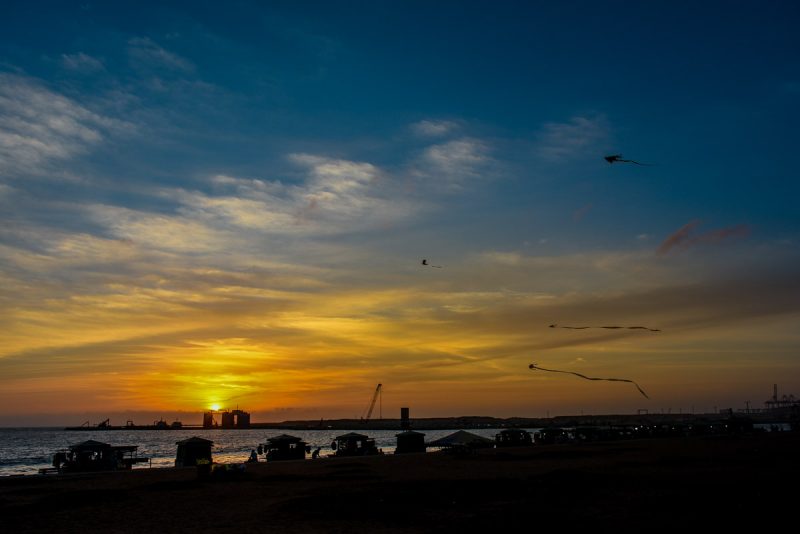
Sri Lankan Parliament Building
My morning actually began in Bentota, as I was staying at the Vivanta by Taj. My guide and I left at around 8:15 and headed north for Colombo for about an hour on the A2 Highway. The reason I include that useless piece of information is because by going that route you go through Kotte. I almost wrote in my intro that Colombo is the capital of Sri Lanka but this is not quite accurate. It is actually the city of Kotte. Kotte is not far, but it is distinct from Colombo.
Going on the A2 highway meant that we could go via the capital, which also meant a drive-by of Parliament House. Since I was pretty keen to get into the city we didn’t stop but it was very cool to see. The Sri Lankan Parliament Building is set out on an island in a lake connected by a thin strip of land. The building might not look like much if you compare it to the US Capitol Building or even Australia’s Parliament House, but the setting of the Sri Lankan version, I’d say, is up there.
Independence Square
Independence Square was a real stop as this is a place I wanted to see. It’s a large open, concrete hall erected to celebrate independence from the British in 1948. Fronted by a statue and an admittedly ageing pond, the columns stand tall surrounded by beautiful, green park.
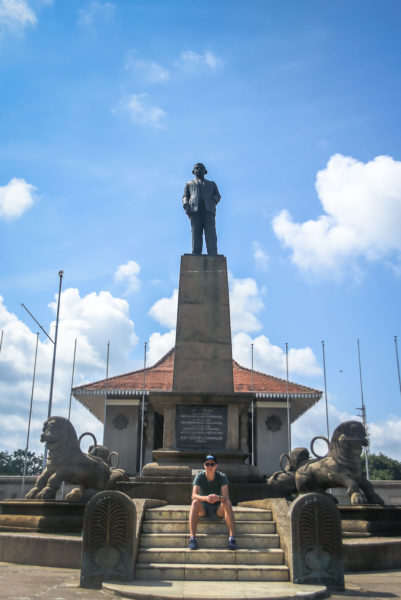
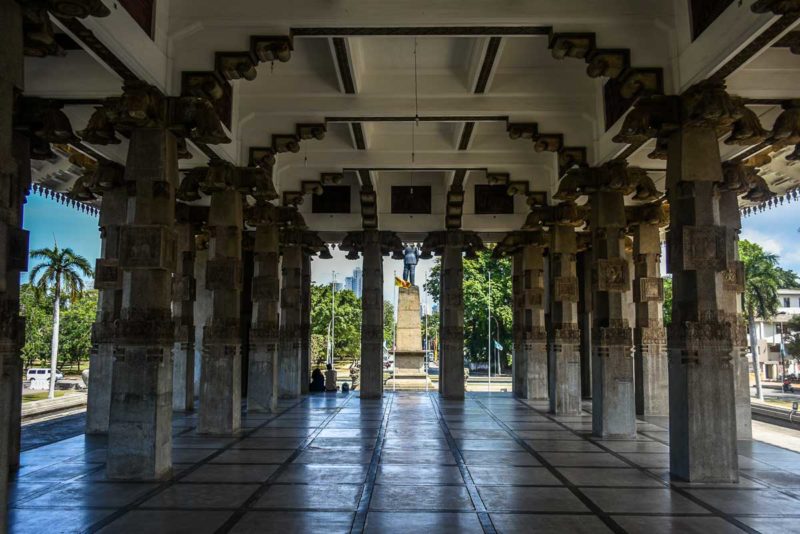
Town Hall and Dawatagaha Jumma Mosque
Town Hall was a genuine car park tour because we happened to be driving past and I asked for a photo. Interestingly, the building is modelled after St Paul’s in London.
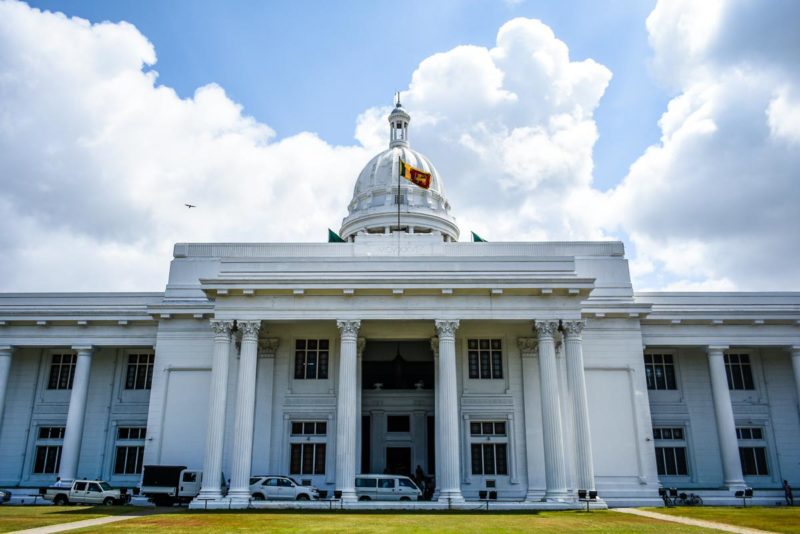
Next door was the Dawatagaha Jumma Masjid, photos of which were taken from the car window. I’ve seen quite a few mosques in my travels, mostly in the Middle East, and now a few more in Sri Lanka, and it has struck me how different the architecture of the Sri Lankan ones are to these. Maybe it’s to do with money — because they aren’t near as grand — or maybe just different influences, but the main difference I’ve seen is that mosques I’m familiar with are dominated by domes, usually one major one and maybe some minor ones plus some minarets. With the exception of this one, most Sri Lankan mosques I saw either lacked domes/minarets completely or they just weren’t emphasised.
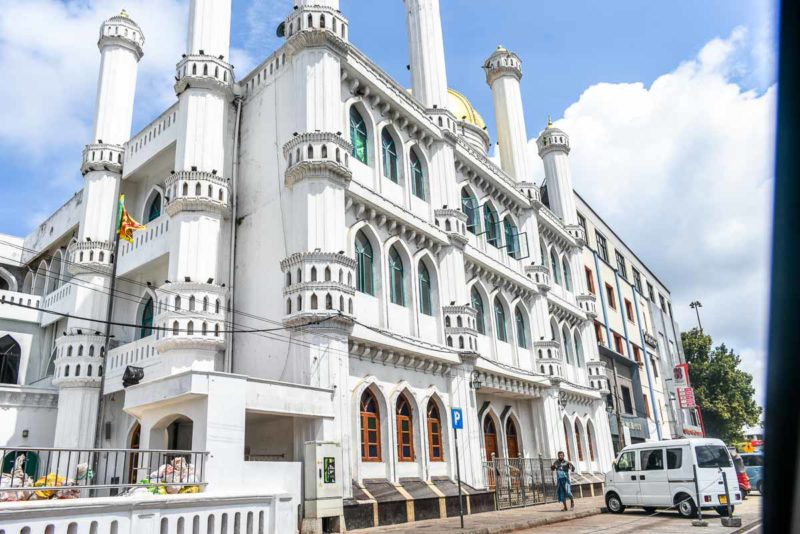
All these stops so far were pretty well just because they were on the way to downtown so neither myself nor Thushith — my guide — really put much thought or effort into seeing them and I was happy with that. The best places to visit in Colombo were yet to come.
Gangaramaya Temple and Seema Malakaya
Gangaramaya Temple is an active Buddhist temple and like most, it is made up of many seemingly disparate parts. We started the little tour in the shrine room, which is jammed full of brightly coloured statues of Buddha and his pals as well as a wall completely covered in equally bright paintings of similar religious significance.
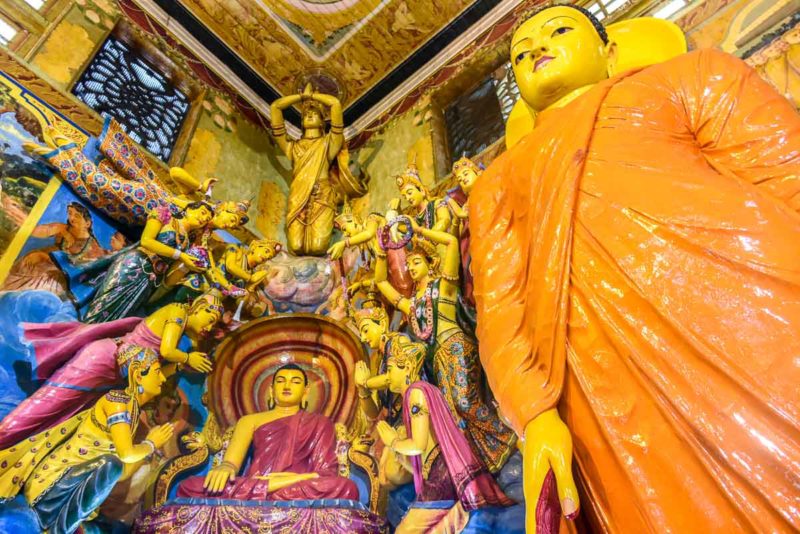
We walked out through a courtyard and up to a museum of largely donated artefacts and objects significant to Buddhism including the world’s tiniest Buddha statues. It’s seriously tiny and there’s a magnifying glass next to it to get a closer look. It’s a bit of a gimmick, but I got a pretty good kick out of it, which will be a surprise to some but not to others.
Downstairs some kind of ceremony was beginning with the drums and the horn, as well as the bringing of food. The people who had donated the food had pride of place on chairs where a monk was about to give a message. It’s times like these when I really wish I could understand the local language.
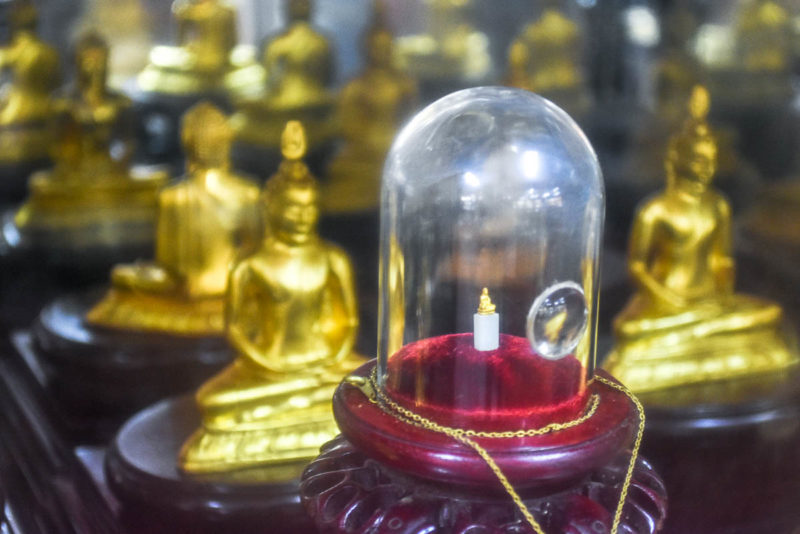
Included in the ticket price (that’s right, temples usually have entrance fees) was a visit to Seema Malakaya. I’m not sure how they are related, but Thushith said they are so I took his word for it. The Seema Malakaya is built out on a small lake on a pier-like structure. It’s a very peaceful setting and nice to walk around for about 10 minutes in socks. This was quickly becoming a shoes-on-again-off-again tour of Colombo.
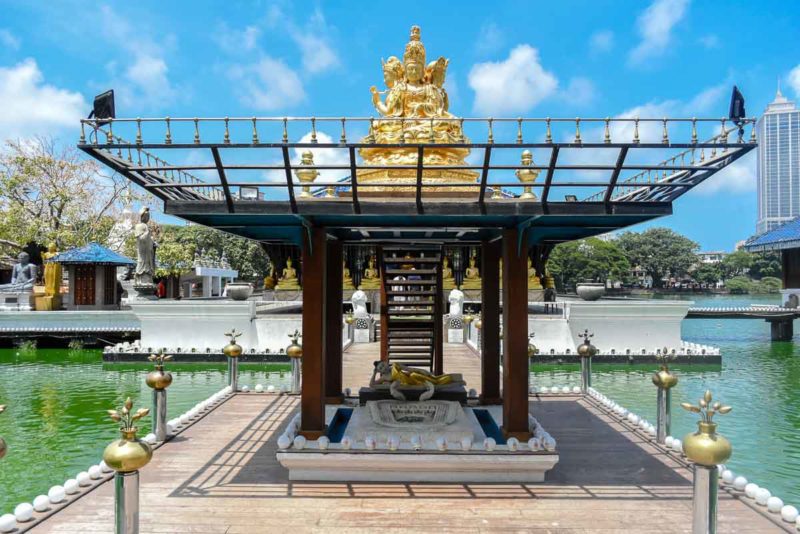
Sri Kailawasanathan temple
The Sri Kailawasanathan Swami Devasthanam Temple is a Hindu temple in the backstreets of Colombo not far from the Cinnamon Lakeside, the hotel at which I was staying. Unfortunately, it was closed this day, so I had to suffice with a car park tour and just took a few photos of the entrance from the outside, all the while dodging tuk-tuks and motorbikes as it faces a reasonably busy backstreet. Just look at the intricate design of the entrance tower.
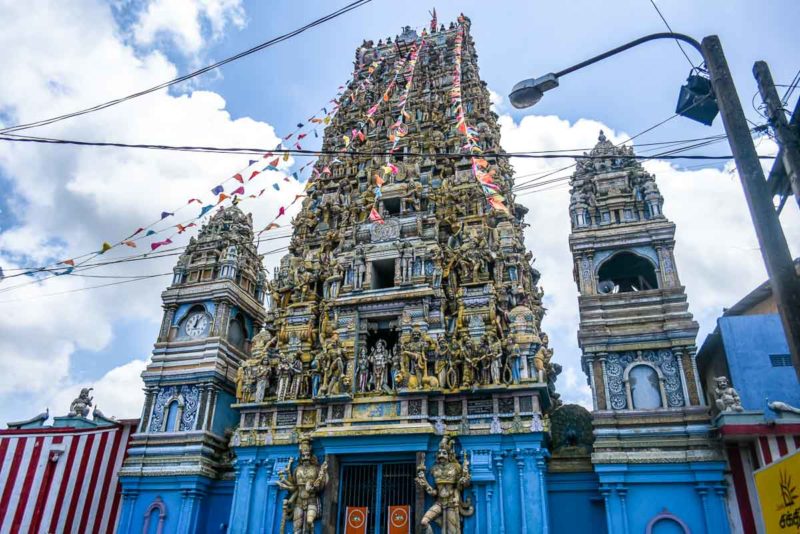
Drive or walk through Fort
Fort is the historic district of Colombo with many buildings having been built by the English in the 17th Century, as many of the Portuguese and Dutch buildings were razed over time. Fort is the central and financial business district of Sri Lanka as it contains such companies as the Colombo Stock Exchange, the Bank of Ceylon, and many government buildings.
We drove through Fort because even the buildings are beautiful and historic, it is mostly government and administration buildings, that actually aren’t terribly interesting on the inside. Many of the buildings remaining are from both the Dutch and the British eras of control so there’s an incredible mix of architecture from the last 400 years. This included the Grand Oriental Hotel — the oldest hotel in Sri Lanka.
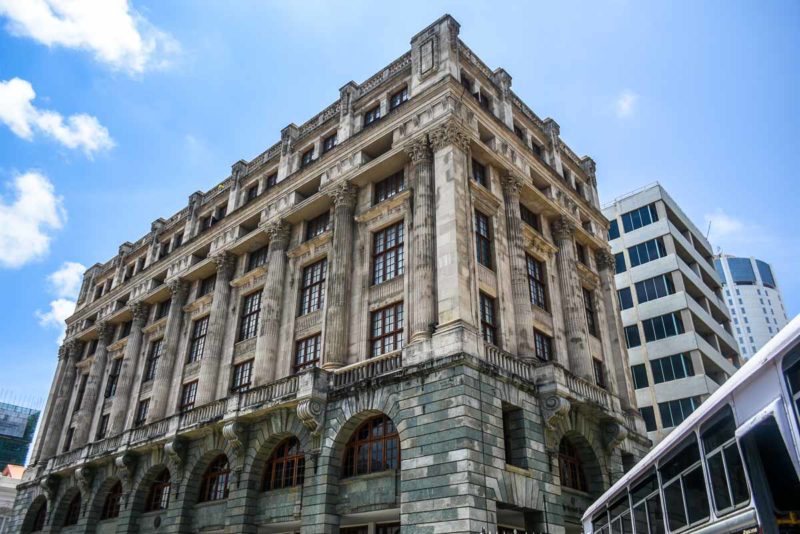
Dutch Hospital
Nearby was the old Dutch Hospital, which has also been converted into a restaurant precinct with everything from casual eats and upscale seafood in the form of the Ministry of Crab. The Ministry of Crab is a seafood restaurant specialising in crab (obviously) owned by former international Sri Lankan cricketers Mahela Jayawardene and Kumar Sangakkara. This probably isn’t interesting to others, but I grew up watching these guys lose to Australia so I found it mildly interesting.
The Dutch Hospital at the time was pretty dead, as we visited in the early afternoon on a Wednesday. However, this will come alive on the weekends, especially Friday and Saturday nights, where young people will split a small keg with mates, get wrecked and listen to live music.
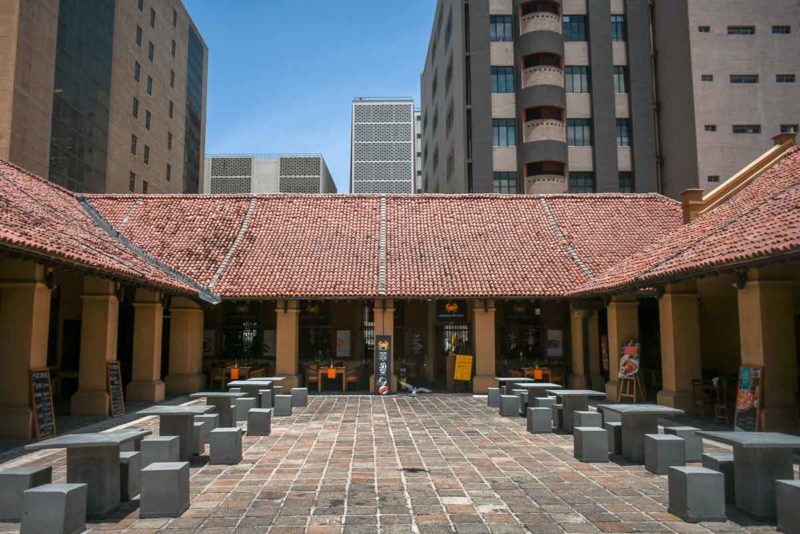
By now we were well and truly ticking off some items on my Colombo sightseeing list and we were ripping through them fast because we’d been driving. It’s not overly necessary to have a car, but since this was part of my tour of Sri Lanka it was a nice convenience. I do like exploring cities on foot though, so thankfully we were about to start some actual walking as we entered the Pettah district. We parked near some of the markets and headed down towards the Jami Ul-Alfar Mosque, otherwise known as the Red Mosque.
Jami Ul-Alfar Mosque
I’m not going to lie, I was probably most excited about seeing this mosque above everything in Colombo. I had come across an image of it from a blog post from another blogger and made sure it was top of the priority list to see. The Red Mosque was like no building I had ever seen. I mentioned above that mosques in Sri Lanka have been quite different to most other mosques I’ve ever visited, this one was even more so. It was astounding. Squeezed in on both sides from some uninteresting buildings, the mosque stands tall and skinny, walls bounding a courtyard in front, and a wall to the footpath. Over the door was a curved archway with 4 tiers of paired columns reaching all the way to the roof. And covering everything was a perfect red and white candy stripe. It was so creative. So unusual. So unexpected.
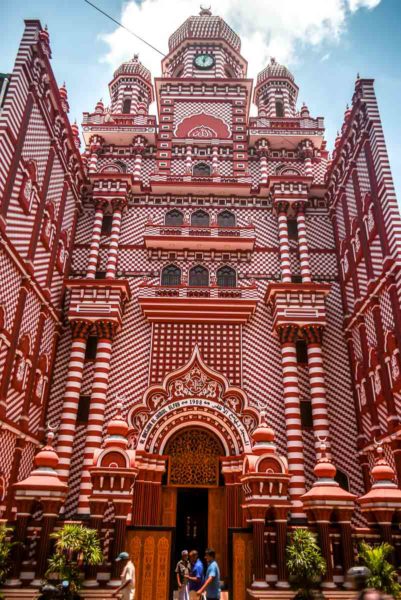
As we arrived, no sooner had I pulled out my camera did someone call out to me. I turned around and this lady seemed sorta angry and had her hand out asking for money. “Money” seemed to be the only English word she knew.
If I’m being honest I thought she was from the mosque and I needed to pay to take a photo, or there was an entrance fee or something like that. I gave her 100 rupees (about $1.00) and, witnessing this success, another lady came up with a little pad that looked like raffle tickets. She started saying something and lady number 1 still had her hand out for more money. I was getting confused and so I asked Thushith so intervene.
He told them to go away and then confirmed that they were beggars. This was probably obvious to you, but you weren’t there, man! I’m used to my beggars being on the ground with a cup, maybe a little sign, not walking around harassing people. What is this place?!
Anyway, I quickly crossed to the other side of the road to continue taking photos and had a bit more success. But since the road on which the Red Mosque is situated is actually quite a busy thoroughfare — there are many cars, tuk-tuks and scooters zipping by on the road, and hundreds of people walking by on the footpath — I had to dodge these somehow through my viewfinder.
Indian for lunch
Anyway, I rushed through taking my shots and Thushith and I headed along the road in search of an Indian food place that is supposed to be really good. We walked past a fruit stand and Thushith bought me a mangosteen — yet another fruit I’ve never heard of. It was very sweet with a big seed and a thick skin. We found the Indian restaurant across from the New Kathiresen Temple. We ordered a masala dosa each, which is a giant roll of thin dough, though it has the consistency and sort of taste of grilled cheese. Delicious.
The dosa is rolled into what looks like a giant burrito and you tear off a piece and dip it into one of three sauces. Don’t ask me what the sauces were though, that was too much to retain. Inside the dosa was the masala, which was potato in a similar sauce to the dipping sauces. The bizzarre thing about the meal is that utensils are not given, you wash your hands before the meal and then proceed to just eat everything with your hands. And that’s not because of what I ordered, that’s everyone in the restaurant. My meal leant itself to hand-eating so it wasn’t too bad. I’m just glad I didn’t get a curry!
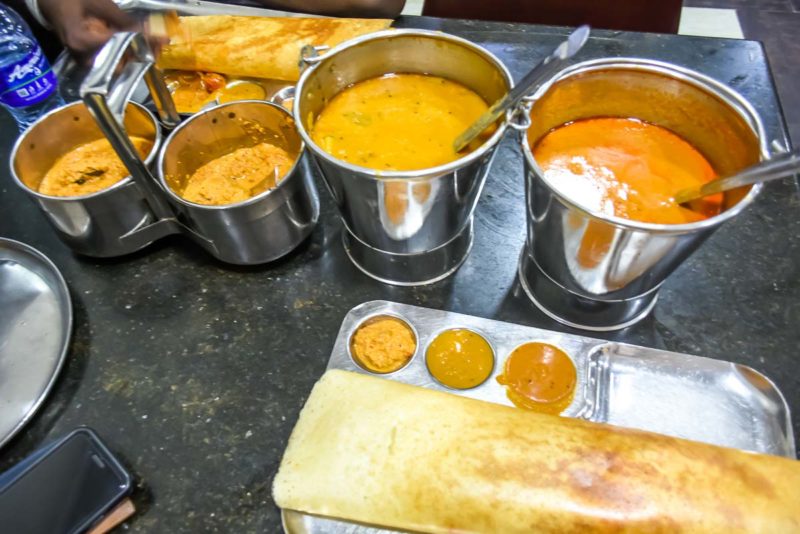
Pettah Markets
When you read about the Pettah markets you might confused because there’ll be “Pettah markets” and “Pettah Floating Markets” and any number of other variations. The neighbourhood is Pettah, let’s get that’s straight first and foremost, and there are in fact a couple of different markets I wandered.
The first was a fruit and veg market, exploding in a sea of colour, in the air the subtle scent of whatever fruit was closest. At the current point in time, it was from the huge pile of pineapples on the ground. Shortly thereafter it changed dramatically to fish as I passed a stall with piles of tiny fish for sale. At the other end of the open air hall, there was a man in a booth talking loudly and continuously into a microphone. He was selling scratchies for 25 rupees a pop. Thushith bought a roll and furiously scratched them, winning a free ticket in the process. This ended the way most forays into scratchies do; 30 seconds of fun followed by regret and failure.
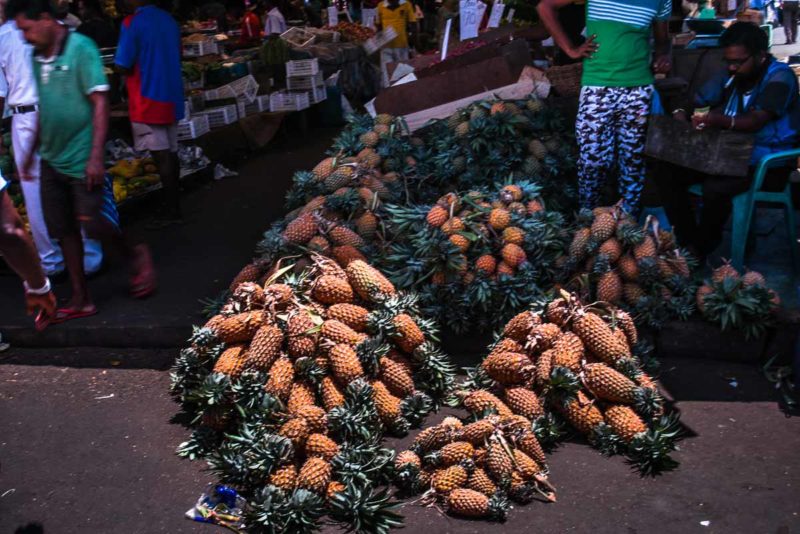
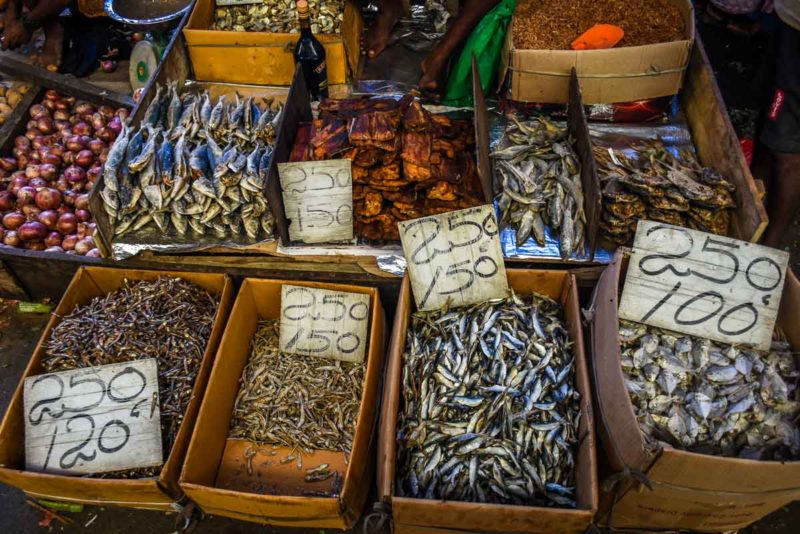
The next set of markets was more enclosed and in closer quarters, if that was possible. This time it was all about garments, bags, and a smattering of electronics. I kept an eye out for anything that might score me some points with my kids but there really wasn’t anything. Remember what I said last week about the markets in Singapore and Japan? About how I wasn’t really interested. Well, these markets were considerably better but I still didn’t find anything I wanted enough to enquire about price.
That’s the only thing I loathe about markets. You have to ask the price, the price is never the price until the negotiation ends, but I don’t know at what price I might want it. For example, in the Kandy market, I was happy to buy a shirt for 1400 rupees, but he started at 2200 which was not going to happen. I then asked if he had any dirt cheap sarongs, because I’d be going to some temples and I didn’t want to keep wearing my skinny jeans in 30 degree heat. He brings out this whole fancy thing and didn’t understand that I just want something cheap. He starts at 2500, which is just ridiculous. I mean, I wanted to buy something, anything for under 500 so I didn’t even both negotiating. Anyway, that’s a story for another blog post.
Anyway, back to the Pettah markets. Yeah I didn’t find anything worth wasting money on.
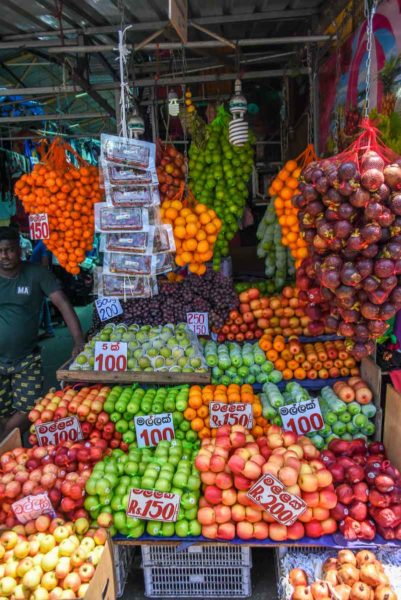
Pettah Floating Markets
Across the road are what they call the floating markets. This was another example of something that’s probably really good in the busy times, but most stalls here were actually shut today so it was pretty unexciting. A quick stroll past the Fort Railway Station and we got back in the car, headed for the Cinnamon Lakeside hotel to check me in for a stay of a grand total of 5 hours, only slightly shorter than my previous stay of 7 hours earlier that week.
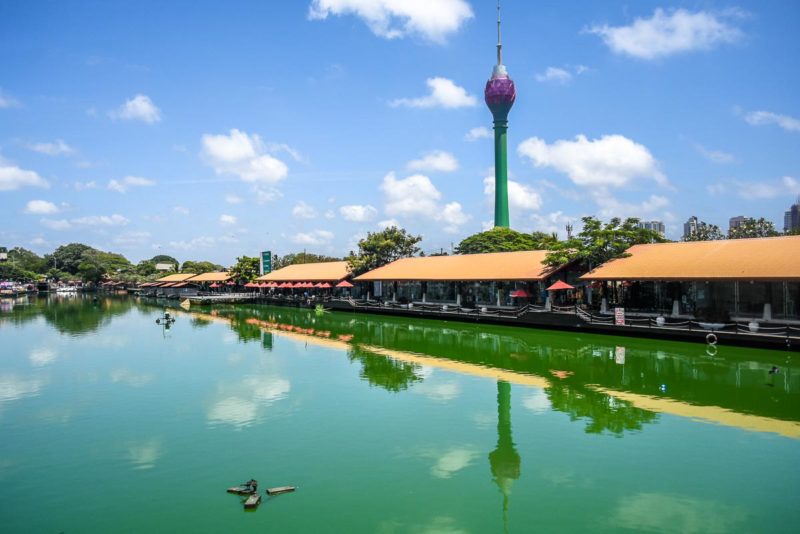
I put my legs up and had a rest. Even though the walking schedule had been pretty light so far, the heat and the weak was starting to catch up to me. I had a swim in the pool, relaxed, and took advantage of happy hour to recharge the batteries.
Galle Face Green
Sufficiently refreshed, I headed back out in search of Galle Face Green. It was only a 20-minute walk from the hotel and I did this as briskly as possible without looking like a weirdo. I got there just in time to watch the sun dip behind the clouds for what turned out to be a magnificent sunset.
Galle Face Green was absolutely nothing like I imagined. It was one of those wonderful moments when I hadn’t seen pictures online, so what I’d read gave me a picture in my mind’s eye, which was completely different to reality. I pictured a wide beach lined with buildings housing local restaurants and bars, a little like St Maarten. It was none of these things. The beach is there but it’s not wide by any stretch, and you have to actually drop down off a wall a metre or two to get to the water, I got the impression people don’t really swim there.
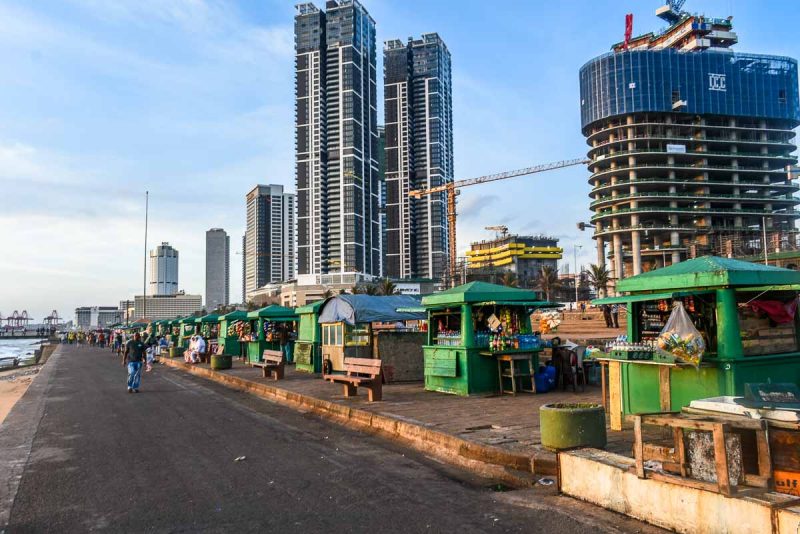
The buildings I imagined turned out to simply be little green huts selling soft drinks and snacks, with a few larger tents set up with tables and chairs with a fuller menu of local foods like various devilled meats kuththu, whatever that is. There was also a smattering or push carts selling fried seafood snacks like prawn scallops and similar variations. I had two variations and ate it while watching the sunset. He deep fried it for a minute or two and it was done; two whole prawns on a potato cake type things and a potato cake filled with tiny prawns. Delicious. How good is street food?
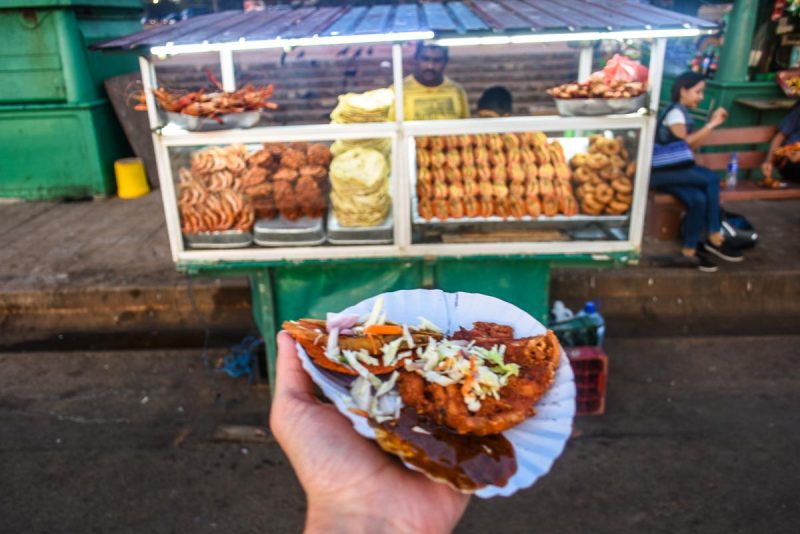
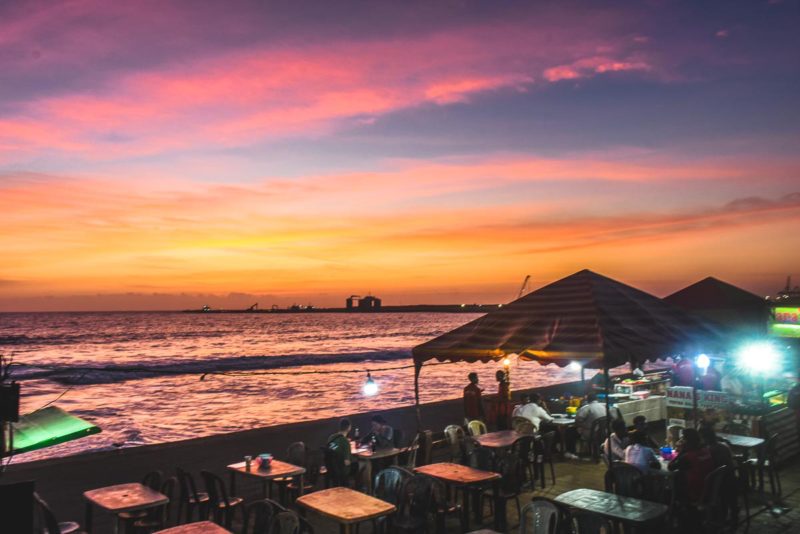
I caught a tuk-tuk back to the hotel and packed my gear. Even though I’d only checked in at 2 pm, I was getting ready to check out by about 9 pm because my flight was at 1 am. Normally I wouldn’t do this but Aitken Spence hooked me up with a room, just to refresh before the flight!
Where to Stay in Colombo
I mentioned I stayed at the Cinnamon Lakeside Hotel, and this was perfect for what I needed. First of all, it was central and it was an easy to walk to places in Colombo like the Pettah Markets and Galle Face Green. It was also pretty luxurious; my room was spacious, my bed was really comfortable, and the pool was enormous. The service was top notch and the buffet was to die for. In particular, the array of pastries on the breakfast buffet was one of the best I’ve seen.
History, culture, local food, and architecture: Colombo surprised me. Promise me you won’t just head straight out into the jungles or the beaches. Spend some time getting to know the gateway to Sri Lanka. Colombo deserves it.
All flights, transport and accommodation were provided by Singapore Airlines in association with Aitken Spence Travels but the fun I describe is 100% real and genuine.
Did you enjoy this post?
Plenty more where that came from. Make sure to sign up for the mailing list to never miss the next one.
Want to save this for later? Pin these, just hover.
